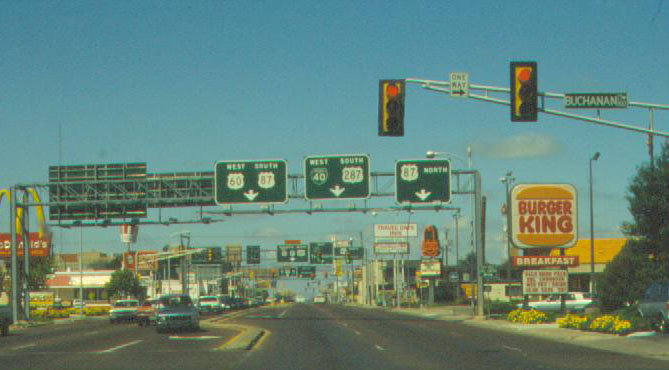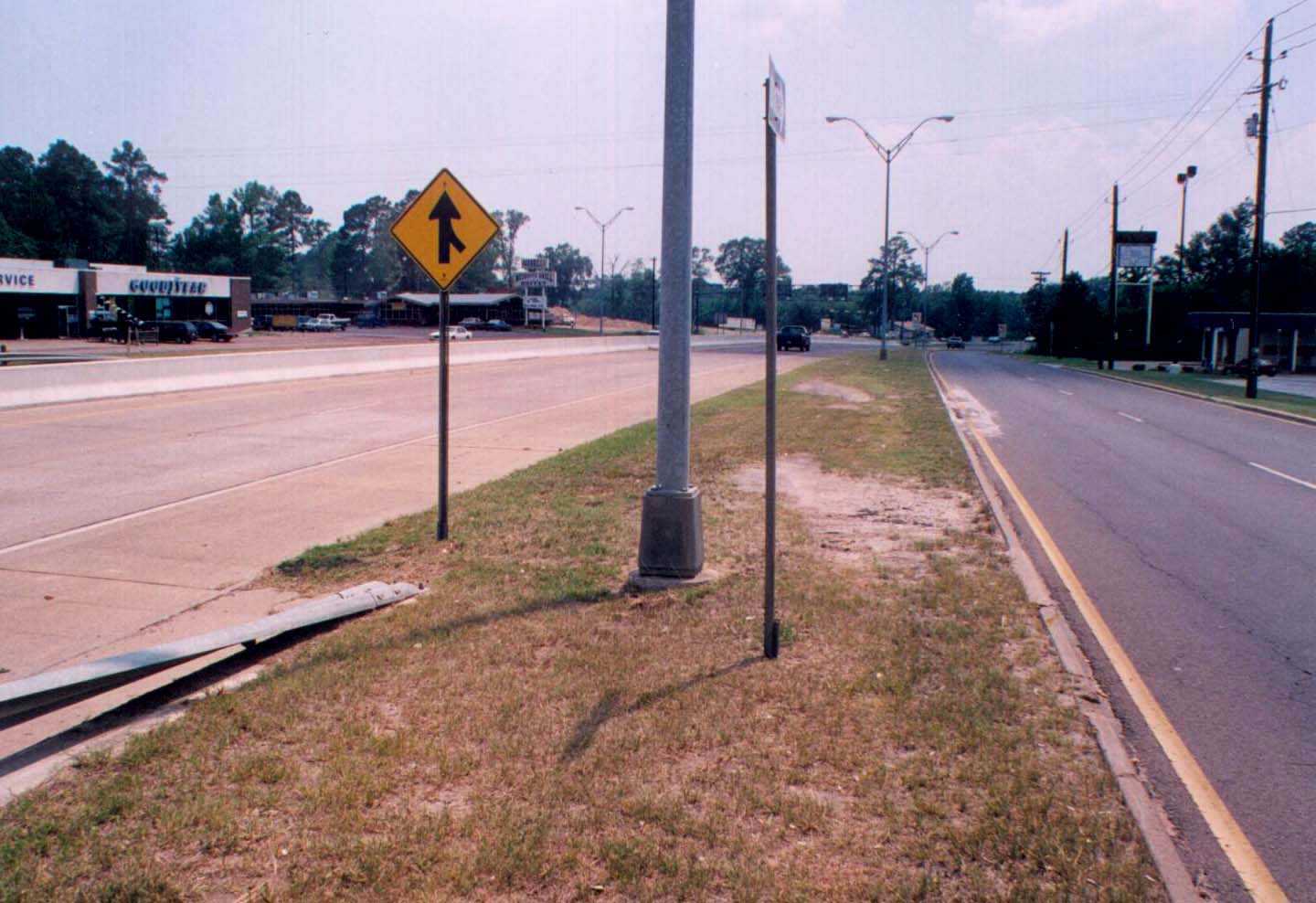Section 8: Signals and Signs
Anchor: #i1011008Overview
This section discusses the landscape and aesthetics aspects of highway signs and graphics. The configuration of signs used on the highway follows set guidelines that are based on safety and visibility criteria. This information is provided in the Manual of Uniform Traffic Control Devices (MUTCD), accessible at this Internet address: http://mutcd.fhwa.dot.gov.
Signs have a marked impact on the aesthetic character of the roadway. The purpose of a sign is to convey specific information and/or elicit specific driver behaviors. However, from an aesthetics point of view, signs increase the number of objects, lines, and edges contributing to the visual complexity of the scene. This can be particularly worrisome in urban areas where traffic signs are competing with other commercial messages.
In a majority of cases it is not possible to have fewer signs. So the focus from an aesthetics point of view becomes the composition of the signs and the hardware used to mount and support the signs.
This section discusses signals and signs in terms of:
- Anchor: #RPWSDIVB
- visual complexity Anchor: #AKKGRLBF
- large route information signs Anchor: #GKDUXSUI
- directional and traffic signs Anchor: #HOKTNUTC
- traffic control signs and signals
Visual Complexity
The concept of “visual complexity” relates to the amount of visual stimuli within the driver’s view at any one time. Visual complexity is increased as more objects fill the scene. As these objects get overlaid on one another, the ability to detect particular objects will depend greatly on the object’s contrast with its background.
Even objects that have little surface area can contribute to this complexity. Posts, poles, and wires add lines and edges that can significantly increase visual complexity. While it is not feasible to eliminate these elements, care should be taken to reduce their number wherever possible. Figures 4-59 through 4-61 show an example of combined signs and reduced complexity.
The more complex the scene, the more likely it is that important information will not be detected. In these cases, safety may be compromised.
Figure 4-59. Too many individual signs and posts contribute to a visually complex scene.
Figure 4-60. Combining signage where possible, reduces visual complexity and improve visibility of the signed information.
Figure 4-61. Combining signs on a single post where possible reduces the number of poles and further reduces the clutter of the scene.
Anchor: #i1011115Large Route Information Signs
These signs may be mounted on freestanding posts, sign bridges, or on bridges. These signs are large, usually 8 ft horizontally but of variable vertical dimension. When several signs are mounted on the same structure several simple rules can be followed to help improve the aesthetic quality.
- Anchor: #VJUWYFYE
- A sign bridge, or other supports, should be made of materials and style that fit with the visual quality of the surroundings. Anchor: #FEESFXQW
- Where practical keep the signs mounted on a structure the same size. Anchor: #QTWUGNWQ
- Keep the tops of the signs aligned, even if signs are different sizes. This helps minimize the lines and edges silhouetted against the horizon and is most important in urban areas where there are numerous signs (see Figures 4-62 and 4-63).
Figure 4-62. Large sign bridges can contribute to complex scenes through their lack of uniformity and structural detail.
Figure 4-63. Uniform sign sizes and hidden structures improve appearance and readability despite a visually complex background.
Anchor: #i1011163Directional and Traffic Signs
Minimize the number of signs and sign clusters. When several signs are needed, such as at the intersections of several state-maintained routes, the signs should be clustered to minimize the number of posts. This reduces the visual complexity of the scene as well as the number of obstructions to maintenance (see example in Figures 4-64 through 4-66). Where possible and appropriate, the number of delineator posts should be reduced by incorporating reflectors into other posts and structures.
Figure 4-64. The placement of these posts restricts vegetation control to hand-operated equipment.
Figure 4-65. Incorporating signs onto nearby structures eliminates trimming around two objects.
Figure 4-66. Paving between immovable structures eliminates all need for hand maintenance.
Anchor: #i1011205Traffic Control Signs and Signals
Traffic control signs (stop, yield, one way, etc.) are essential for safe and efficient operation. Numerous options exist for mounting or housing signals and signs. The primary concern should be to complement the elements of the intersection and adjacent land use. Street name signs can often be incorporated into the adjacent buildings or other structural elements. There are numerous hardware, color, and form options available for mounting traffic signals. All of these options should be explored as part of a total design concept for a particular transportation corridor.

